In this quick guide to prenatal yoga teacher training, we provide a breakdown of poses and modifications for each trimester of pregnancy!
As a yoga instructor, you may not have specifically attended a prenatal yoga teacher training, but you are likely to have a pregnant woman coming into your classes at some time or another. While there are specific prenatal yoga classes available in some areas, they are not as frequent and may not meet a pregnant woman’s schedule. Especially for intermediate to advanced yoga practitioners, pregnant women are often able to attend regular yoga classes. It is important as both a yoga instructor and a pregnant yoga practitioner to be aware of the following modifications and tips to practice safely and to ensure that the pregnant woman feels safe and comfortable.
Where to Begin with Pregnant Yoga Students
When a pregnant woman first enters your class, it is important to talk with them about their specific pregnancy and if they have any complications. You should also confirm with them that they have been cleared by their doctor and it is safe for them to practice yoga. If you as an instructor do not feel comfortable or equipped to keep a student safe in your class, due to complications or risks they are experiencing in their pregnancy you should recommend them to a prenatal class or to another instructor.

Every Pregnancy is Different
Every pregnancy is different, and each day of pregnancy may be different from the last, so it is important to communicate with your students about how things are going. Check in with them before and after each class to see what is working and what is not. Empower students to make their own decisions during class as to whether something is working for their bodies or not. Teach them the modifications but stress that it is important for them to listen to their bodies and take rest when needed. It is not a time to force or push something.
At the Costa Rica School of Massage Therapy, we believe it is important to address that a pregnant student may walk into your class at any time. While you won’t receive a specific certificate in pre-natal yoga, we believe it is important to educate and equip you with the tools necessary to instruct a prenatal student through your class. We dedicate an entire day of classes to studying the anatomy and physiology of pregnancy discussing modifications and considerations by trimester, and preparing you to ask informed questions of your students.

Here we have broken down our top pre-natal yoga tips by trimester:
First Trimester
- Be aware of nausea. Some students may be experiencing extreme fatigue. Be sure the student knows that child’s pose is always available.
- Student may feel timid, or worried about doing poses, especially if it is their first pregnancy. Encourage students to do only what feels comfortable.
- Dizziness is very common in the first trimester. Sometimes forward folds, going from head down to head up quickly, and especially sun salutations can exacerbate the dizziness. Encourage your students to take rest at any time they feel dizzy, and to avoid having their head down. Students should avoid hot yoga classes, hot temperatures will dehydrate you quickly and exacerbate dizziness.
- Avoid closed twists with pregnant students – you can teach open twists by twisting to the opposite side.
- Relaxin is a hormone released in the body during pregnancy loosens ligaments and joints. Be sure students are not over pushing themselves. It is not a time to try and go deeper than normal into poses. Students should take a less wide stance in trikonasana or triangle pose, warrior poses, etc. to not over exert or over extend.
- Some pregnant students may suffer from sacroiliac joint pain, or pain in the low back and hips. In this case, they may experience discomfort in asymmetrical standing poses such as trikonasana or triangle pose, warriors, etc. due to the looser ligaments and the shifting of the hips. Modifications should include symmetrical standing poses such as prasarita padottanasana or wide-legged forward bend pose. Some asymmetrical standing poses can be done on the knees as well such as virabhadrasana or warrior 2 & 3, utthita parsvakonasana or side angle pose, and ardha chandrasana or half moon pose.
- Give students a few alternative poses to get into before class, if there is a pose in your sequence that they shouldn’t do. Something active for more active/standing and something seated for when you’re on the floor.
Modified Warrior Poses can be done on the knees
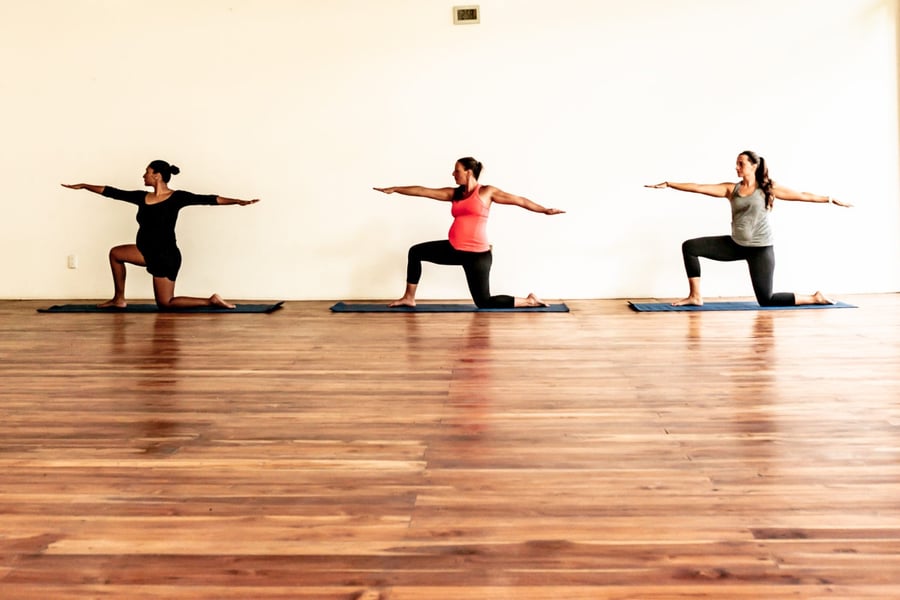
Open Twists Leave Room for the Belly
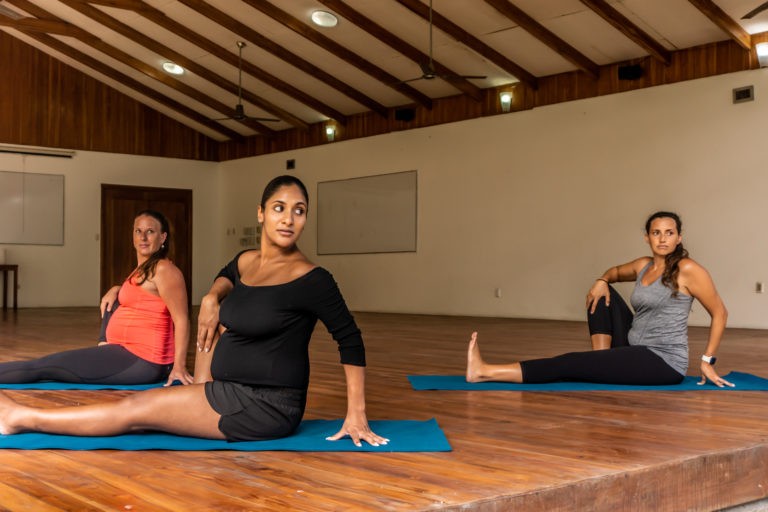
Modified Ardha Chandrasana or Half Moon Pose
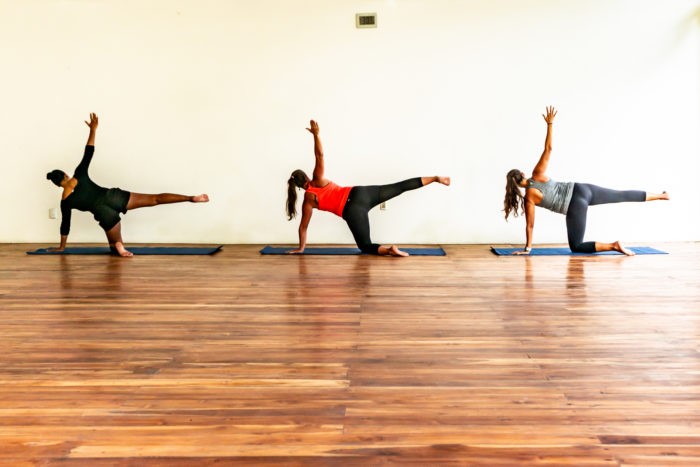
Second Trimester
- Have students take a wider stance in tadasana or mountain pose and especially in forward bends or poses like chair where the torso comes close to the legs to provide ample space for the belly.
- Balancing poses should be done near the wall because the center of gravity is off! Excess fluid and lymph in body throws off balance in the inner ear.
- Prone or belly-down poses become challenging (locust, bow, cobra, etc.). Offer poses on hands/knees such as cat/cow and extending one leg one arm in tabletop. Upward dog at the wall is a nice modification.
- Take caution with backbends. Students may still feel comfortable but going deeply into weight bearing backbends may start to feel uncomfortable. Back-bends put excess strain on lower the back and hips which results in there not being enough room for baby in the front side. Ustrasana or camel pose is a great non-weight bearing option that can be taken. Props can also be offered for back bends such as a chair, blocks or bolsters. Seting up bandha sarvangasana or bridge pose with a block is also a great place for students to get some backward extension without putting strain and weight on muscles and joints of lower back.
- Take caution with abdominal poses. Navasana or boat pose should be modified with bent knees or feet on the floor.
- Avoid active supine (belly up) poses (legs at 30-60-90 or navasana). If the practitioner experiences any dizziness or abdominal pain stop the pose immediately.
- Always place a bolster or blanket under the knees in savasana to avoid excess pressure on the vena cava. Always offer a side lying savasana on the left side of the body if laying on the back is uncomfortable. Use bolsters and blankets to create a comfortable side lying position.
- This is not a time to begin practicing inversions for the first time, but if they are in the student’s practice normally they can continue as comfortable. Be aware that any inversions can exacerbate heartburn. It is recommended to stop doing inversions in the third trimester. Offer modifications using the wall or a chair.
Camel Pose is a great option
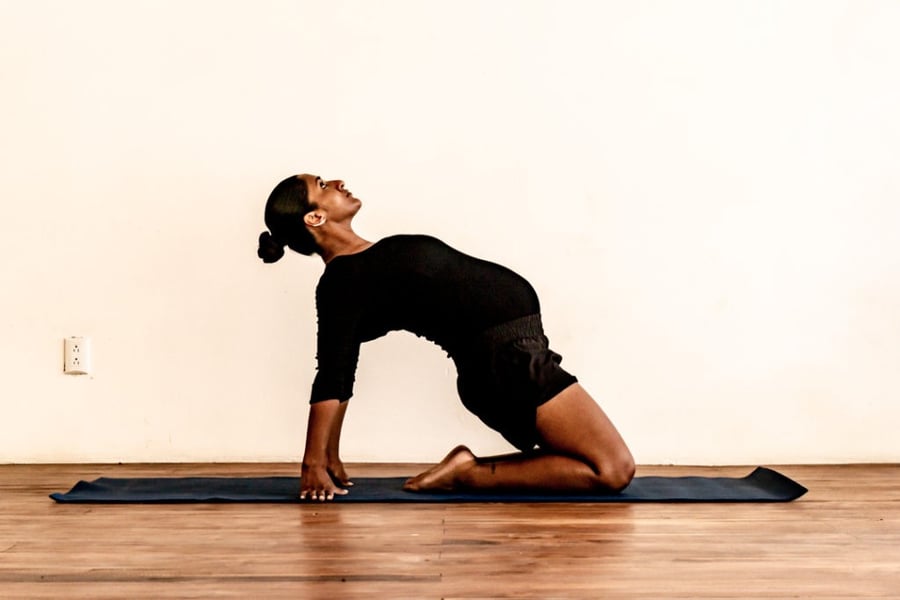
Upward Dog at the Wall is a nice modification
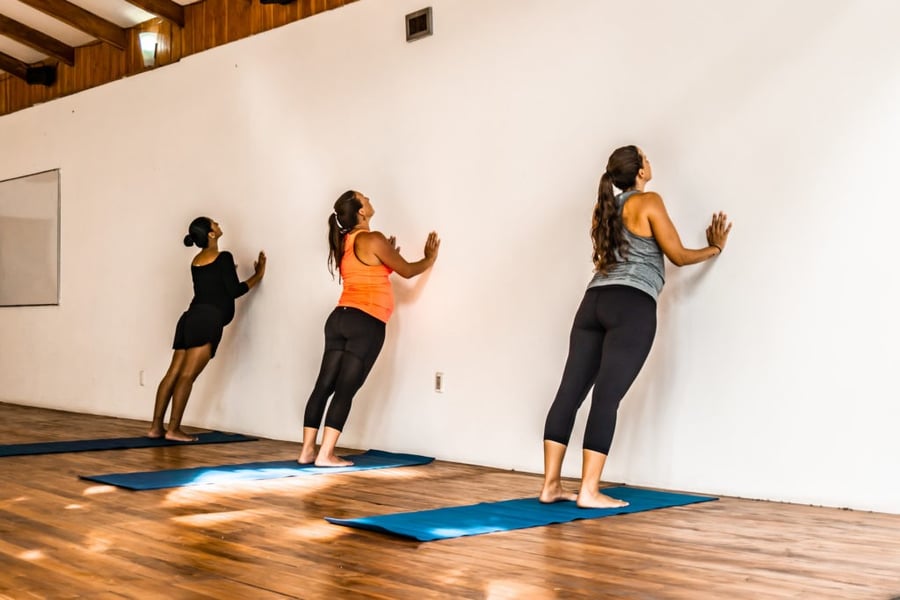
Side Lying Savasana with a bolster
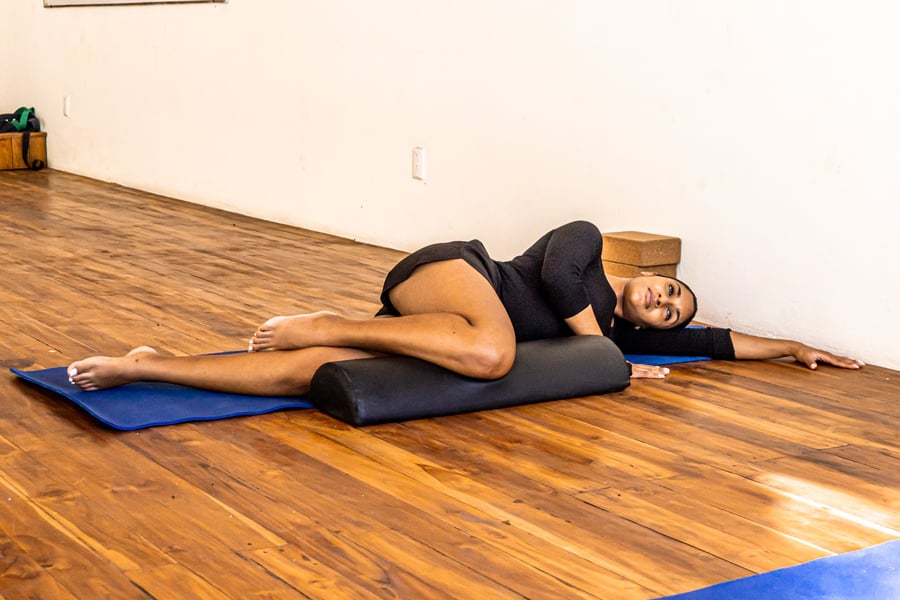
Third Trimester
- In this stage of prenatal yoga teacher training we focus on the third trimester.
- Faster pace classes may begin to feel challenging in the third trimester. Yoga practitioners may experience shortness of breath, discomfort, and fatigue.
- It may be best for students to focus on prenatal and restorative poses at this stage.
- Good time for pranayama and meditation. In pranayama, avoid any retention of breath, and no breath of fire.
Supta Baddha Konasana or Reclining Bound Angle Pose
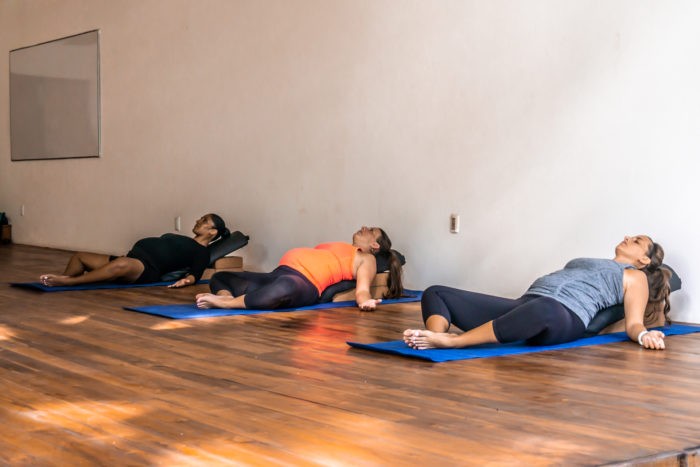
Restorative Poses for 3rd Trimester

Childs Pose is a great restorative option
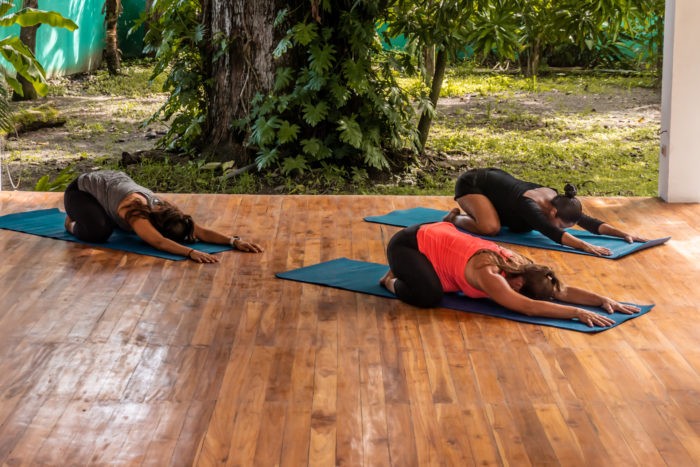
The Costa Rica School of Massage Therapy is the world’s premier study abroad program for massage therapy and yoga. We offer both a 600 hour and a 700 hour COMTA Endorsed Curriculum Massage Therapy course which satisfies the licensing requirements for massage therapy in most of the United States. Additionally, we offer continuing education for massage therapists.






